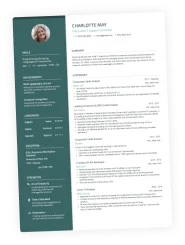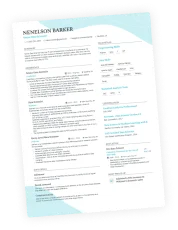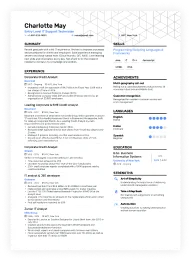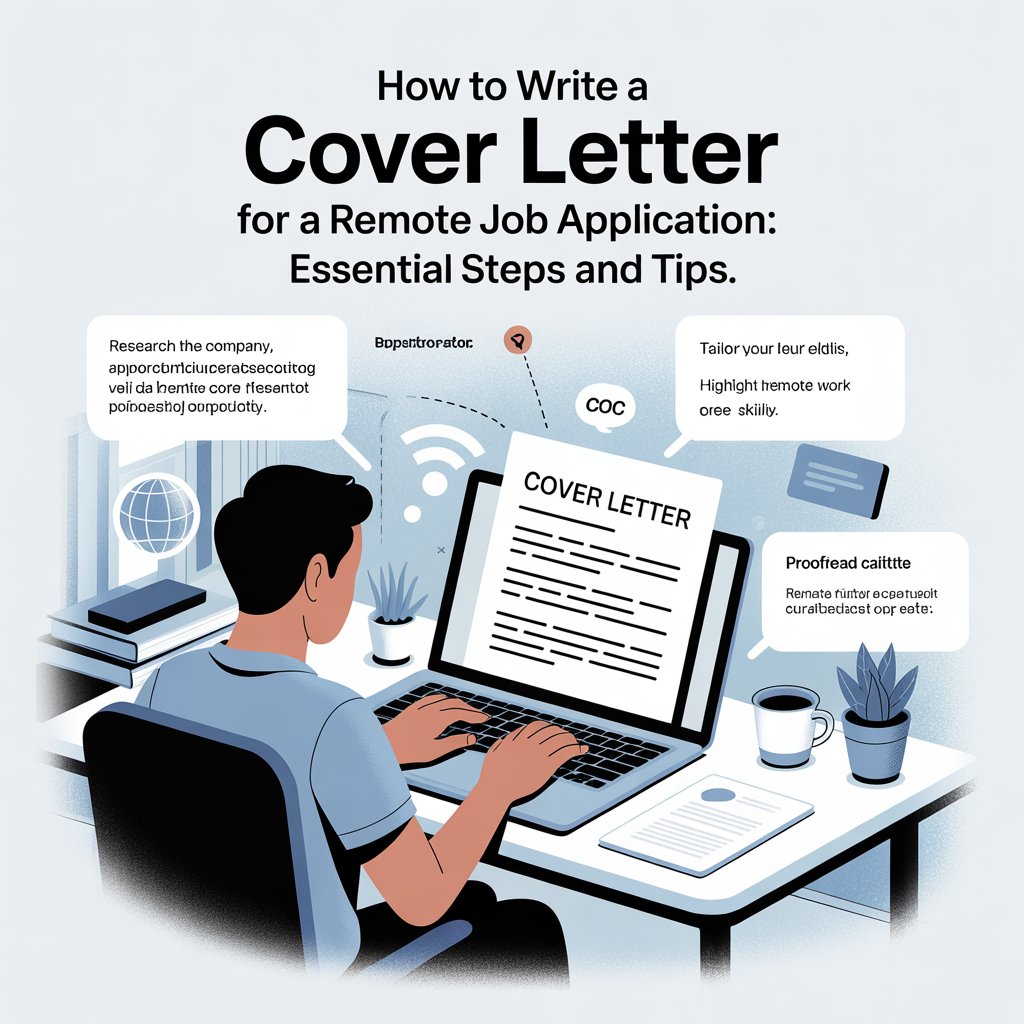Writing a strong cover letter can really give you an edge in today’s crowded job market. A good cover letter should show—without any fluff—why you’re a great fit and make employers curious to learn more about you. Below are 10 tried-and-true strategies to make a cover letter stand out, broken down into simple steps you can actually use.

You’ll find practical suggestions here—like using the hiring manager’s name, kicking things off with a strong opening, and matching your skills to the job description. There are examples that show how tiny tweaks in your cover letter can really change your results. Plus, with tools out there now, it’s easier than ever to tailor your application and double-check your letter; for instance, you can Try RoboApply for free to make applying on LinkedIn and Indeed less of a headache.
Understanding the Purpose of a Cover Letter
A cover letter isn’t just a formality; it’s your chance to explain your motivation, highlight your fit for the job, and show there’s a real person behind the résumé. It lets you connect in a way a list of bullet points just can’t.
Difference Between Cover Letters and Résumés
A résumé is typically a tidy, one or two-page document listing your work history, education, and skills—just the facts, really.
A cover letter, though, is more like a letter (surprise!)—full sentences, a bit of personality, and a clear structure. Where your résumé says what you’ve done, your cover letter explains why you’re interested in this particular job and how your experience lines up with what the company actually needs. It should be tailored for each job, referencing specific skills or experiences from your résumé that match the job posting.
Employers look at the résumé to check off qualifications, but they read the cover letter to get a sense of your communication style and who you are. A clear cover letter really can help your application stand out. If you want more on matching your experience to job needs, check out this detailed guide to writing a cover letter.
Role of a Cover Letter in Job Search
The cover letter fills a gap that a résumé just can’t. It lets you explain why you want this job, at this company, and why you’d be a good addition. It’s also your space to talk about career changes, job gaps, or maybe your desire to relocate—stuff that doesn’t fit neatly on a résumé.
You can show real interest by referencing something specific about the company—maybe their values or a recent project. Oh, and if you can find the hiring manager’s name, use it! It personalizes your application and shows you care.
A lot of hiring managers still say a sharp cover letter is a must, especially when the competition is fierce. Digital tools can help here, too—if you want to draft, edit, or even score your cover letters for a particular job, you can Try RoboApply for free.
Importance of First Impressions
Your cover letter is often the first thing a hiring manager sees before even glancing at your résumé. That means your opening lines matter—a lot. The intro should state the job you’re after, why you want it, and a quick hit of your best, most relevant qualifications.
Looks count, too. Go with a readable font, short paragraphs, and enough white space to keep things inviting. Typos or grammar mistakes? Those will sink your chances fast.
A strong first impression can be the difference between landing an interview or getting overlooked. If you want more tips on grabbing attention early, check out guides on writing cover letters that stand out. Need help with formatting or scoring your letter? Try RoboApply for free.
Researching the Company and Job Requirements
The best cover letters start with real information. If you understand the company and the job, your application will stand out—simple as that.
Analyzing the Job Description
Job descriptions spell out the main skills, experience, and duties a company wants. Read it closely and look for keywords like “project management,” “team leadership,” or “customer support.” Highlight those words and think about where you’ve done those things before.
A quick table can help organize your thoughts:
| Requirement | Example from Resume |
|---|---|
| Customer Service | Handled 50+ calls per day |
| Excel Proficiency | Built weekly sales reports |
| Team Collaboration | Led a team of 4 on key project |
Matching up requirements with your actual experience shows recruiters you’re not just applying blindly. A focused cover letter should mention these skills directly. Automation tools like Try RoboApply for free can analyze job postings and suggest which skills to highlight.
Identifying Employer’s Needs
Companies want more than just tasks done—they have bigger goals, like growing sales, boosting morale, or expanding their reach. Do a little digging: check out their latest news, mission statement, or any awards they’ve picked up.
For instance, if a company’s going global, mention your international experience or language skills in your letter. Showing you “get” what they’re after is a big plus.
Here are a few places to look for clues:
- Company website’s “About Us” or “News” sections
- Recent press releases and social media
- Employee reviews on job boards
With the right research, it’s way easier to tailor your cover letter for each company.
Finding the Hiring Manager’s Name
Skip “To Whom It May Concern” if you can. Start by checking the job posting for a contact name. If nothing’s there, poke around the company website or the team page.
LinkedIn can be a goldmine for finding hiring managers or department heads. Still no luck? Try calling the company and politely ask who’s handling the hiring for this role.
A personalized greeting like “Dear Ms. Lee” just feels more professional. It shows you pay attention to details, which recruiters appreciate. Need help personalizing your letters? Try RoboApply for free.
Structuring an Effective Cover Letter
A well-structured cover letter makes it way easier for hiring managers to spot what matters. The right formatting and a bit of organization can boost your confidence and help you show off your qualifications.
Essential Information to Include
Start every cover letter with clear contact info: your name, address, phone, and email at the top. Right below, add the date and the recipient’s name, company, and address.
Open by naming the job you’re applying for and where you saw it. Your first paragraph should say you’re applying and give a brief intro.
In the body, share examples that prove you’ve got the skills and experience they want. If teamwork is key, talk about a group project you nailed.
Wrap up by showing enthusiasm for the job and asking for an interview. Always thank the reader for their time—it’s just polite.
Formatting and Length Guidelines
Keep it short: aim for one page, about 3–4 quick paragraphs. Use a font size between 10 and 12 points, and stick with easy-to-read fonts like Arial or Times New Roman.
Set margins to one inch all around. Single spacing is best, with a blank line between paragraphs to keep things readable.
Proofread! Typos and grammar mistakes are an easy way to get passed over. Attention to detail really matters to recruiters.
Here’s a quick table for reference:
| Element | Guidance |
|---|---|
| Font Size | 10–12 point |
| Margins | 1 inch all around |
| Length | 1 page or less |
| Paragraphs | 3–4 brief sections |
Choosing a Cover Letter Template
A cover letter template can help you organize your thoughts and make sure you don’t leave anything out. Most templates walk you through what to put where, from the greeting to the sign-off.
Lots of word processors and career sites offer free, clean templates—no need for wild colors or graphics. Keep it simple.
Some job boards like LinkedIn and Indeed let you upload your cover letter directly. Tools like RoboApply can help you pick and fill out templates, saving time while letting you add your own touch. Try RoboApply for free if you want help scoring your letter or building drafts fast.
Personalization and Targeting
Every effective cover letter stands out because it feels like it was written for a real person, by a real person. A little personality, the right keywords, and a proper greeting can go a long way.
Customizing for Each Application
A personalized cover letter should always be written for the specific company and job—not just copied and pasted for every application. Take a few minutes to review the job description and company background, then mention something that proves you did your homework. Maybe call out a recent achievement or a value you connect with.
Compare a generic line like “I wish to join your company” with something more targeted: “Your commitment to sustainable energy, as seen in your solar expansion project, inspired me to apply.” See the difference? It shows you care and actually paid attention.
It’s handy to keep a table tracking where you’ve applied and what you’ve personalized:
| Company | Job Title | Unique Detail |
|---|---|---|
| SunPower Co | Energy Analyst | Solar expansion project |
| HealthSync | Data Coordinator | New telemedicine app |
If you’re juggling lots of applications, workflow tools (or automation platforms like Try RoboApply for free) can help you keep details straight and customize quickly—without losing that personal touch.
Using Relevant Keywords
Cover letters packed with the right keywords tend to get noticed—by both applicant tracking systems (ATS) and, hopefully, real humans reading them. Keywords are pulled straight from the job description: think skills, qualifications, and those oddly specific requirements.
So, what’s the move? Read the job posting carefully and pick out the main keywords. Then, weave them into your cover letter. It’s especially smart to drop these into the parts where you talk about your skills and experience. Let’s say the job asks for “project management” and “data analysis”—well, show where you’ve actually done those things, not just that you know the buzzwords.
How to keep keywords in check:
- Go through the job description and mark the must-haves.
- Highlight the most important skills and requirements.
- Slip these words into your cover letter, but make sure they sound natural.
There are even online tools that’ll scan job postings for keywords and give your cover letter a “score” to help you improve. Try RoboApply for free if you’re curious about how your application measures up.
Addressing the Hiring Manager Correctly
Getting the greeting right can set the tone (and show you care about details). If you can, dig up the hiring manager’s name. Check the company’s site, poke around the job listing, or do a quick LinkedIn search. Using a real name—like “Dear Ms. Carter”—always feels more genuine than a generic opener.
Can’t find the name? “Dear Hiring Manager” works. It’s a lot better than the old “To Whom It May Concern” (which just feels cold and outdated). Keep things formal but not robotic.
If the company is secretive about who’s hiring, you could reference the position instead: “Dear Marketing Team Lead” or “Dear Human Resources Manager.” The main idea? Every cover letter should open with a greeting that feels like you put in some effort.
A quick checklist for finding the right contact:
- Browse company web pages.
- Search LinkedIn or professional networks.
- Use specific greetings whenever you can.
If you want a shortcut for this step or need help with targeted openings, Try RoboApply for free.
Highlighting Your Unique Value and Achievements
Employers want to know what sets you apart. That means you’ve got to show real proof—actual results, relevant skills, and the value you can add.
Showcasing Relevant Experience
Zero in on past roles and tasks that line up with what the job is asking for. Use language from the posting, but don’t just copy-paste—show how you handled similar tasks. For example:
- Managed a team of six to deliver marketing projects ahead of deadlines
- Created and implemented a new customer service process for a retail store
Lists like this make it easy for hiring managers to see you’ve actually done the work. Throw in numbers and specific job titles if you can. Tailoring your cover letter for each job shows you’re paying attention, and honestly, it makes you more memorable. It’s one of the best ways to write an effective cover letter.
If you want help matching your experience to a job posting, Try RoboApply for free—it’ll even score your resume and suggest improvements.
Including Key Achievements
Achievements speak louder with numbers. Bullet points or a quick table make these easy to scan:
| Achievement | Outcome |
|---|---|
| Increased sales by 30% | Exceeded quarterly targets |
| Trained new hires | Boosted team productivity by 10% |
| Improved project workflow | Reduced delivery time by 3 weeks |
Pick two or three wins that really fit the job. Spell out what you did, how you did it, and the impact. It’s the fastest way to show you’re not just qualified—you’re valuable.
Demonstrating Hard and Soft Skills
Anyone can list skills, but examples are what make them believable.
- Hard skills: “Developed and maintained SQL databases,” or “Designed graphics with Adobe Illustrator for marketing campaigns.”
- Soft skills: “Led a team project during a busy quarter,” or “Resolved customer complaints by building trust.”
Keep it short and relevant. Try to match your examples to the keywords in the job description. Employers want people who can do the work and get along with others—so mention both your technical chops and your people skills.
Try RoboApply for free if you want help figuring out which skills to highlight for each job.
Communicating Personality and Motivation
A great cover letter isn’t just about ticking boxes—it’s about showing who you are and why you care about the job. Employers want to see your skills, sure, but they also want to feel your enthusiasm and see that you’d fit in with their team.
Sharing Professional Development
Show that you’re the kind of person who keeps learning. Mention certifications, workshops, or new skills you’ve picked up. For example:
“Recently, she completed a Certified Project Management course, adding new techniques to her toolset and improving her ability to lead teams.”
Or, just keep it simple:
- Finished an online leadership course in 2024
- Attended diversity and inclusion training
- Volunteered for a cross-department project
These details show you’re not standing still. Companies want people who grow and adapt.
You can use tools like RoboApply to organize and highlight your professional development. Try RoboApply for free.
Describing Motivation for the Role
Why this job? Why this company? If you can answer that honestly, it’s way more compelling. Connect your past experiences or your goals to what the company stands for. For example:
“He is drawn to the company’s focus on clean energy because he has always cared about sustainable technology, first volunteering for the local recycling program in high school.”
A quick table can help clarify your motivation:
| What Motivates | How It’s Connected |
|---|---|
| Creative problem-solving | The job involves designing new solutions |
| Teamwork | The company highlights collaboration |
| Personal growth | The company offers training programs |
Don’t just say you want a “new challenge”—that’s too vague. Mention something specific about the company or the role, and tie it back to your own goals. That’s what makes your interest believable.
Presenting Personality Authentically
Let your personality come through. Skip the stiff, formal language. Use a friendly, respectful tone—something you’d actually say. For instance:
“She thrives in fast-changing settings and likes sharing ideas with team members to solve problems together.”
If it fits, use “I” statements. Drop in a personal detail that connects to the job or company:
- Enjoys brainstorming with others to find fresh solutions
- Values honest feedback and regular learning
- Gets energy from supporting and guiding teammates
This makes your cover letter feel real, not robotic. Authenticity shows you’ll mesh well with the company’s culture.
If you’re wondering whether your cover letter sounds natural, Try RoboApply for free for feedback on your tone and wording.
Addressing Potential Challenges
Writing a cover letter isn’t always straightforward. Maybe you’ve got a gap in your work history, you’re just starting out, or you don’t have much experience yet. Here’s how to handle those bumps in the road.
Explaining Employment Gaps
Gaps happen. Be honest, but keep it brief—no need to overshare. Mention the reason (caring for a family member, traveling, going back to school, or dealing with health stuff), and highlight any skills you picked up along the way—even if it was through volunteering, freelancing, or online courses.
Try to connect what you learned to the job you’re applying for. For example:
“During a year away from the workforce to care for a family member, I improved my time management and communication skills. I also completed an online certification in project management.”
The key is to show growth, not just time away. Want to double-check if your explanation works? Try RoboApply for free before you hit submit.
Highlighting Entry-Level Positions
If you’re going for an entry-level job, lean into your transferable skills and your excitement to learn. School projects, internships, volunteering, or club activities all count.
Something like:
- Completed a major team project in high school science class
- Led a fundraising effort for a local charity
- Supported classmates as part of a peer tutoring program
You can also say something like:
“While I am new to the workforce, my leadership role as student council treasurer has prepared me to take on new tasks quickly and responsibly.”
If you want templates or help with entry-level applications, Try RoboApply for free.
Overcoming Lack of Experience
Not having direct experience doesn’t mean you can’t do the job. Focus on skills like problem solving, teamwork, organization, or anything technical you’ve picked up. Use real scenarios to show your value:
“As a volunteer event coordinator at my community center, I managed logistics for group meetings, which strengthened my organization and communication skills.”
A little table can help spell out the connections:
| Skill | Example |
|---|---|
| Organization | Planned weekly schedules for club meetings |
| Teamwork | Coordinated with a group to host events |
| Tech Savvy | Edited videos for social media promotions |
Plug these examples into your cover letter where they make sense. If you’re not sure if your message is strong enough, Try RoboApply for free to get tailored suggestions.
Perfecting Your Cover Letter Before Submission
A sharp cover letter can make you stand out, but small mistakes can trip you up. Proofreading, paying attention to details, and making sure your letter works with employer systems can all boost your chances of making a good impression.
Proofreading and Revising
Proofreading isn’t just running spell-check. Read your cover letter out loud—awkward phrasing and typos jump out that way. If you can, ask a friend or colleague to look it over. Sometimes you just miss things in your own writing.
Watch out for common slip-ups like spelling names wrong, mixing up job titles, or grammar mistakes. Double-check that everything matches your resume. A weird trick: read your cover letter backwards, sentence by sentence—it really helps spot spelling errors. Editing tools like Grammarly can help, but don’t rely on them alone.
Quick proofreading tips:
- Step away for a bit before rereading—fresh eyes catch more mistakes.
- Print it out—sometimes you spot errors on paper you missed on a screen.
- Keep a checklist for things like verb tense, punctuation, and company names.
Ensuring Attention to Detail
Little things matter. Double-check that business names, job titles, and contact info are all correct and up to date. Clean formatting helps, too: clear spacing, consistent fonts, matching margins.
Make sure each cover letter is tailored for the job—don’t recycle generic lines or use old company info. Use language and requirements straight from the job description to show you’re paying attention. You could even make a quick table matching the company’s key qualifications to your own experience, just to be sure you’re lining things up.
It’s worth looking at expert examples to see how the pros do it. RoboApply can help check your letter against the job posting, too. Try RoboApply for free for tools that help polish your content and keep it professional.
Checking Compatibility with Applicant Tracking Systems
Applicant Tracking Systems, or ATS, are basically the robots that sift through job applications before a human ever sees them. If you want to avoid getting tossed out by mistake, stick to standard headers—think “Experience” or “Education”—and skip tables, graphics, or funky fonts that might trip up the software.
Save your cover letter as a plain .docx or .pdf file. Steer clear of special characters, images, or colored text; those can really mess things up for the ATS. It’s smart to work in keywords straight from the job description, especially when it comes to skills or experience they’re asking for.
If you’re not sure how your formatting holds up, try uploading your letter to an ATS-friendly site and see what happens. Tools like RoboApply will actually scan and rate your cover letter against ATS standards, which can be a huge help for tweaking your content. It might be worth giving RoboApply a shot (there’s a free version) just to make sure your application doesn’t vanish into the void.
Closing Strongly and Following Up
The ending of a cover letter really can make you stand out—or, well, just fade into the pile. How you wrap things up, whether you suggest a next step, and if you include extra materials, all play into whether you’ll stick in someone’s mind.
Crafting a Compelling Closing Paragraph
That last paragraph is where you get one more shot to remind them why you’re a great fit. It should show your interest in the job and make it clear what you bring to the table. Oh, and don’t forget to thank them for their time—no one likes being taken for granted.
Here’s a solid example:
“I am excited about the opportunity to join ABC Company as a Sales Associate. My experience increasing sales and leading teams matches well with your goals. Thank you for considering my application. I look forward to the chance to discuss my fit for your team.”
This kind of closing hits the main points and sounds genuinely enthusiastic. If you want more ideas, check out these strategies to end a cover letter.
Including a Clear Call to Action
A good cover letter doesn’t just trail off—it nudges the employer to actually do something. Whether you’re inviting them to reply, set up a call, or schedule an interview, be polite but don’t beat around the bush.
Some simple, effective examples:
- “I am available at your convenience for an interview.”
- “Please contact me at 555-123-4567 to arrange a meeting.”
- “I look forward to discussing how my skills can help your company.”
A call to action like this shows you’re proactive and serious. For more pointers, this guide to closing a cover letter is worth a look.
Sharing Your Portfolio or Additional Documents
These days, lots of jobs want proof you can actually do what you say—so attaching a portfolio or extra documents is often a must. Just mention in your closing paragraph what you’ve attached, or drop in a link to your site or certifications.
You could say something like:
“I have attached my portfolio, which showcases recent web design projects. Please let me know if you need additional writing samples or references.”
Or, if you want to be extra clear, list them out:
Attached:
- Resume
- Portfolio link: www.yourportfolio.com
- Letters of recommendation
This makes it easy for employers to find what they need. There are even tools to help you keep these documents organized—if you want to keep things simple, Try RoboApply for free to handle applications and attachments without the headache.
Frequently Asked Questions
Cover letters really shine when you tailor them for each job. Zero in on the essentials, use real-world examples, and add specific details to boost your odds of making a real impression.
What are the key elements to include in a strong cover letter?
You’ll want your contact info right at the top, then kick things off with a quick intro—who you are, and why you’re interested.
Share a few specific details about your skills and experience, and explain why you’re a fit for the company. Wrap up with a professional closing that shows you’re open to talking more. If you’re curious, here’s a solid list of cover letter FAQs.
Can you provide examples of effective cover letters for different job applications?
Different jobs, different vibes. For an administrative assistant, you’d focus on organization, communication, and time management. For a software developer, highlight your technical chops and projects you’ve tackled.
Here’s a sales example:
Dear Hiring Manager,
I am excited to apply for the Sales Associate position at Smith Retail. With three years of experience in customer service and a proven track record of exceeding sales targets, I understand what it takes to build strong relationships with clients. My ability to quickly learn new systems and my outgoing personality make me a great fit for your team. I look forward to discussing my application and how I can help Smith Retail grow.
How can one tailor a cover letter to a specific industry or company?
Always do your homework—dig into the company’s values and the job description. Use keywords from their listing and mention any projects or goals that stand out.
Explaining why you’re interested in that particular company shows you’re paying attention. It does take extra time, but it’s usually worth it. If you want a shortcut, RoboApply’s cover letter builder can help you whip up custom letters fast.
What are common mistakes to avoid when writing a cover letter?
Probably the biggest one: sending the same generic letter to every job. Don’t just repeat your resume, either.
Watch out for spelling or grammar mistakes, and keep things professional—no texting language or slang. Double-check you’ve addressed the right person or department. For more advice, these common cover letter mistakes are worth reviewing.
How important is following a certain structure or template in a cover letter?
A clear structure definitely helps—most recruiters expect an intro, a body with details, and a short, strong closing.
Templates can be handy, but don’t let them erase your personality. Add your own details and don’t be afraid to sound like yourself. For more on this, check out cover letter structure advice.
What strategies can make a cover letter stand out to potential employers?
Kick things off with an opening line that actually shows you’re excited about the job—not just going through the motions. Instead of rattling off generic skills, try sharing a real example or two that highlight what you can bring to the table.
If you’ve taken the time to dig into the company, sprinkle in something specific about them in your letter. It’s a small thing, but it really shows you care. And honestly, tools like RoboApply are handy for giving your resume and cover letter that extra boost recruiters notice.
Give RoboApply a shot for free if you’re hoping to make your job hunt a little less painful and your applications a bit more memorable.












